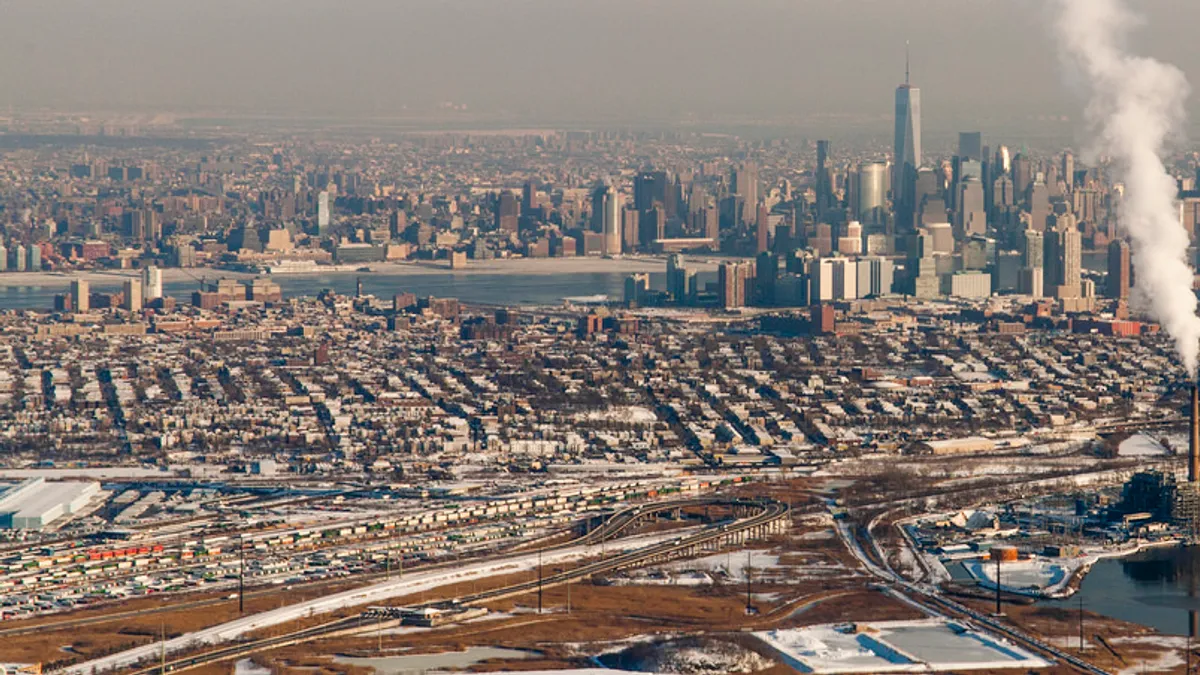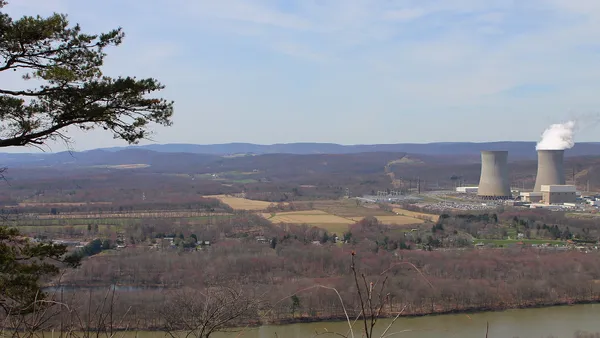Dive Brief:
- New York Gov. Andrew Cuomo (D) yesterday unveiled a "comprehensive agenda to combat climate change" that calls for aggressive increases in energy storage, development of at least 800 MW of offshore wind resources and new energy efficiency targets to be set later this year.
- The state will also work to expand the Regional Greenhouse Gas Initiative (RGGI), extending the voluntary compact beyond the current nine states and broadening regulations to include smaller, less-efficient peaking plants.
- Cuomo's plan also calls for adopting regulations that phase out coal-fired power plants in New York by 2020. The governor previously called for such a step in his 2016 State of the State address.
Dive Insight:
New York made waves yesterday when it unveiled a slate of clean energy proposals that sets the highest energy storage mandate in the country. Cuomo wants to commit at least $200 million from the NY Green Bank for storage investments that will help integrate renewable energy.
The plan is to roll out 1,500 MW of energy storage by 2025. Cuomo's proposal also calls for the New York State Energy Research and Development Authority to invest at least $60 million through storage pilots and activities to reduce barriers to deploying energy storage, including permitting, customer acquisition, interconnection and financing costs.
"New Yorkers know too well the devastation caused by climate change, and in order to slow the effects of extreme weather and build our communities to be stronger and more resilient, we must make significant investments in renewable energy," Cuomo said in a statement.
But the energy package is also being framed as a boon to the state's economy. Cuomo wants the state to employ 30,000 workers to establish New York as a home to the clean tech industry — a goal that he says could produce $2 billion in "energy value" to the state.
"New York is taking bold action to fight climate change and protect our environment, while supporting and growing 21st century jobs in these cutting-edge renewable industries," Cuomo said.
The proposal would also develop a solar program for 10,000 low-income residents, with NYSERDA utilizing its purchasing power to secure community solar subscriptions and provide them at zero cost.
Last year, Cuomo called for developing 2.4 GW of offshore wind by 2030, and now wants to launch procurements this year and next targeting 800 MW. The solicitation will "create competition among developers to build some of the largest offshore wind projects in the United States," according to the governor's statement.
Cuomo will also direct the N.Y. Department of Environmental Conservation (DEC) to launch a rulemaking this year to implement the 30% reduction in the carbon dioxide emissions cap announced by the RGGI states last summer. Those changes would include revisions to cover peaking units that collectively exceed RGGI's capacity threshold of 25 MW. Cuomo also indicated his office would work with RGGI states and potential new partners in Virginia and New Jersey to broaden the compact's reach.
To "immediately reduce emissions" from the state's highest-polluting power plants, Cuomo also directed the DEC to propose complementary reforms to decrease emissions of smog-forming pollutants from peaking units, and to adopt regulations ending the use of coal in the state's power plants by 2020.
Clean energy advocates in the state hailed the announcement, with its focus on efficiency and new wind resources.
Anne Reynolds, executive director of the Alliance for Clean Energy New York, said offshore wind creates a "huge potential to deliver clean electricity to Long Island and New York City while creating new jobs and attracting investment."
Reynolds added that the energy efficiency industry already employs 110,000 workers in New York. Cuomo's directive "to establish a new efficiency target by Earth Day is great news," she said.














